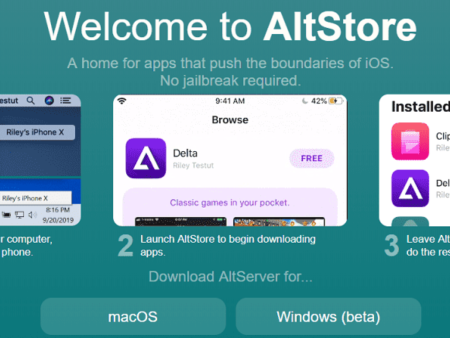A Guide to Conducting Effective Competitor Analysis for ASO
-
14/03/2023
-
840
-
0
- 1. Understanding the Importance of Competitor Analysis for ASO
- 2. Identifying Your App's Competitors
- 3. Analyzing Competitor Keywords and Ranking
- 4. Examining Competitor Creatives and Descriptions
- 5. Assessing Competitor Analysis for ASO - User Feedback and Ratings
- 6. Incorporating Competitor Analysis for ASO
- Conclusion
When it comes to App Store Optimization (ASO), conducting an effective competitor analysis for ASO is essential for understanding the market landscape and gaining a competitive edge.
Related posts
The best ways to market iOS, Android apps and games
How to increase iOS app reviews and iOS app ratings free
1. Understanding the Importance of Competitor Analysis for ASO
When it comes to App Store Optimization (ASO), conducting a competitor analysis is a crucial step in optimizing your app's visibility and success. Here are some sub-ideas that explain why competitor analysis is important in ASO:
Why competitor analysis matters for ASO: Understanding your competitors' strengths and weaknesses can help you improve your own app's ASO strategy. By analyzing what works well for your competitors; you can adapt their successful techniques and avoid their mistakes.
 Understanding the Importance of Competitor Analysis for ASO, Source: Asoservice.com
Understanding the Importance of Competitor Analysis for ASO, Source: Asoservice.com
The benefits of conducting competitor analysis: Conducting a regular competitor analysis can help you stay up-to-date on your industry and market trends. By monitoring your competitors' activity; you can gain insights into what your audience is looking for ;and make strategic decisions about your own app.
The risks of not conducting competitor analysis: If you neglect to analyze your competitors, you may be missing out on valuable opportunities to optimize your app's performance. You could be targeting the wrong keywords; using ineffective creatives, or missing out on important user feedback that could help you improve your app.
2. Identifying Your App's Competitors
To conduct an effective competitor analysis for ASO, you need to first identify your app's competitors. Here are some sub-ideas on how to do that:
How to find your direct and indirect competitors: Start by researching apps that offer similar functionality or solve similar problems as your app. Look for apps that have similar features, target the same audience, or operate in the same industry or niche. You can also search for keywords related to your app to see which apps appear in the search results.
Tools and resources for competitor research: There are many tools and resources available to help you identify your competitors. App store search engines, Google search; and social media platforms can be great places to start. You can also use ASO tools like Sensor Tower or App Annie to conduct more in-depth research and analysis.
How to narrow down your list of competitors: Once you've identified a list of potential competitors, it's important to narrow it down to a manageable number. Look for apps that are most similar to your own; have a similar target audience, or are performing well in terms of downloads, ratings, and reviews. You can also use ASO service to compare your app's performance against your competitors; and identify the most important ones to focus on.
3. Analyzing Competitor Keywords and Ranking
Analyzing your competitors' keyword strategy and ranking positions is a crucial part of conducting effective competitor analysis for ASO. Here are some sub-ideas on how to do that:
How to identify keywords your competitors are targeting: Start by analyzing the keywords your competitors are using in their app titles, subtitles, descriptions, and other metadata. Look for common themes and topics; that your competitors are focusing on and identify potential gaps or opportunities in their keyword strategy.
How to assess the difficulty of ranking for those keywords: Once you've identified your competitors' keywords, it's important to evaluate the difficulty of ranking for them. Use ASO tools to assess the keyword difficulty score (KDS); and look for keywords with a high search volume and low competition. This can help you identify potential keywords to target in your own app's ASO strategy.
Tools and techniques for tracking your competitors' ranking positions: Use ASO tools to track your competitors' ranking positions for their target keywords. Look for trends over time and identify any changes in their rankings or keyword strategy. This can help you stay up-to-date on your competitors' activity; and make strategic decisions about your own app's keyword targeting.
4. Examining Competitor Creatives and Descriptions
Analyzing your competitors' creatives and descriptions can help you improve your own app's ASO strategy. Here are some sub-ideas on how to do that:
How to analyze your competitors' app icons and screenshots: Start by analyzing your competitors' app icons and screenshots to see what messaging and visuals they are using to attract users. Look for common themes, color schemes; and design elements that your competitors are using and identify any opportunities to differentiate your own app's visuals.
How to evaluate their app descriptions: Analyze your competitors' app descriptions to see what messaging they are using to attract users; and how they are highlighting the app's features and benefits. Look for any unique selling points or benefits; that your competitors are emphasizing; and consider whether your app could offer similar or better value.
What to look for in terms of messaging and visual elements: Look for messaging that resonates with your target audience and any key features or benefits that are highlighted in your competitors' creatives and descriptions. Also, pay attention to any visual elements that could be influencing user behavior; such as colors, font types, and layout. All of this information can help you optimize your own app's creatives; and descriptions to better appeal to your target audience.
5. Assessing Competitor Analysis for ASO - User Feedback and Ratings
Analyzing your competitors' user feedback and ratings is an important part of conducting effective competitor analysis for ASO. Here are some sub-ideas on how to do that:
How to find and analyze your competitors' user feedback: Start by reading through your competitors' app reviews to see what users like and dislike about the app. Look for common themes and issues; that users are experiencing and identify any opportunities to improve your own app's functionality or user experience.
How to evaluate your competitors' ratings: Analyze your competitors' ratings to see how users are rating the app overall and what factors are contributing to their rating. Look for patterns in the rating distribution; such as a high number of 1-star reviews or a low number of 5-star reviews, and consider how your own app's ratings compare.
What to look for in terms of user feedback and ratings: Look for feedback on specific features or functionality that users like or dislike; as well as any issues or bugs that are impacting their experience. Also, pay attention to any common suggestions or requests that users are making; as this can provide valuable insight into what users are looking for in an app. All of this information can help you make strategic decisions about your own app's development and user experience.
6. Incorporating Competitor Analysis for ASO
Incorporating competitor analysis into your ASO strategy is key to improving your app's visibility and success. Here are some sub-ideas on how to do that:
How to use competitor analysis to identify gaps in the market: Analyze your competitors' ASO strategies to identify any gaps in the market that you can fill with your own app. Look for areas where your competitors may be weak; such as certain keywords, messaging, or visual elements; and use this information to differentiate your app and target these gaps.
How to use competitor analysis to optimize your own app's metadata: Use the information you've gathered from analyzing your competitors' metadata, creatives, and descriptions to optimize your own app's metadata. Incorporate popular keywords, messaging, and visual elements that resonate with your target audience, while differentiating your app from your competitors.
How to use competitor analysis to improve your app's user experience: Use the feedback you've gathered from analyzing your competitors' user feedback and ratings to improve your own app's user experience. Identify common issues and pain points that users are experiencing with your competitors' apps, and work to avoid these issues in your own app.
How to use competitor analysis to benchmark your app's success: Use the information you've gathered from analyzing your competitors' metadata, creatives, and user feedback to benchmark your app's success. Identify areas where your app is performing well and areas where you need to improve and use this information to continuously optimize your ASO strategy.
Conclusion
In conclusion, conducting effective competitor analysis for ASO is a crucial step towards improving app store visibility and increasing downloads, and by following the guidelines and best practices outlined in this guide, app developers and marketers can gain valuable insights to optimize their ASO strategy and stay ahead of the competition.
Related posts
https://asoservice.com/ios-android-app-reviews-ratings
https://asoservice.com/microsoft-store-app-reviews
Thanks so much for reading this article.
Source: https://asoservice.com/




































Leave a Reply
Your e-mail address will not be published. Required fields are marked *